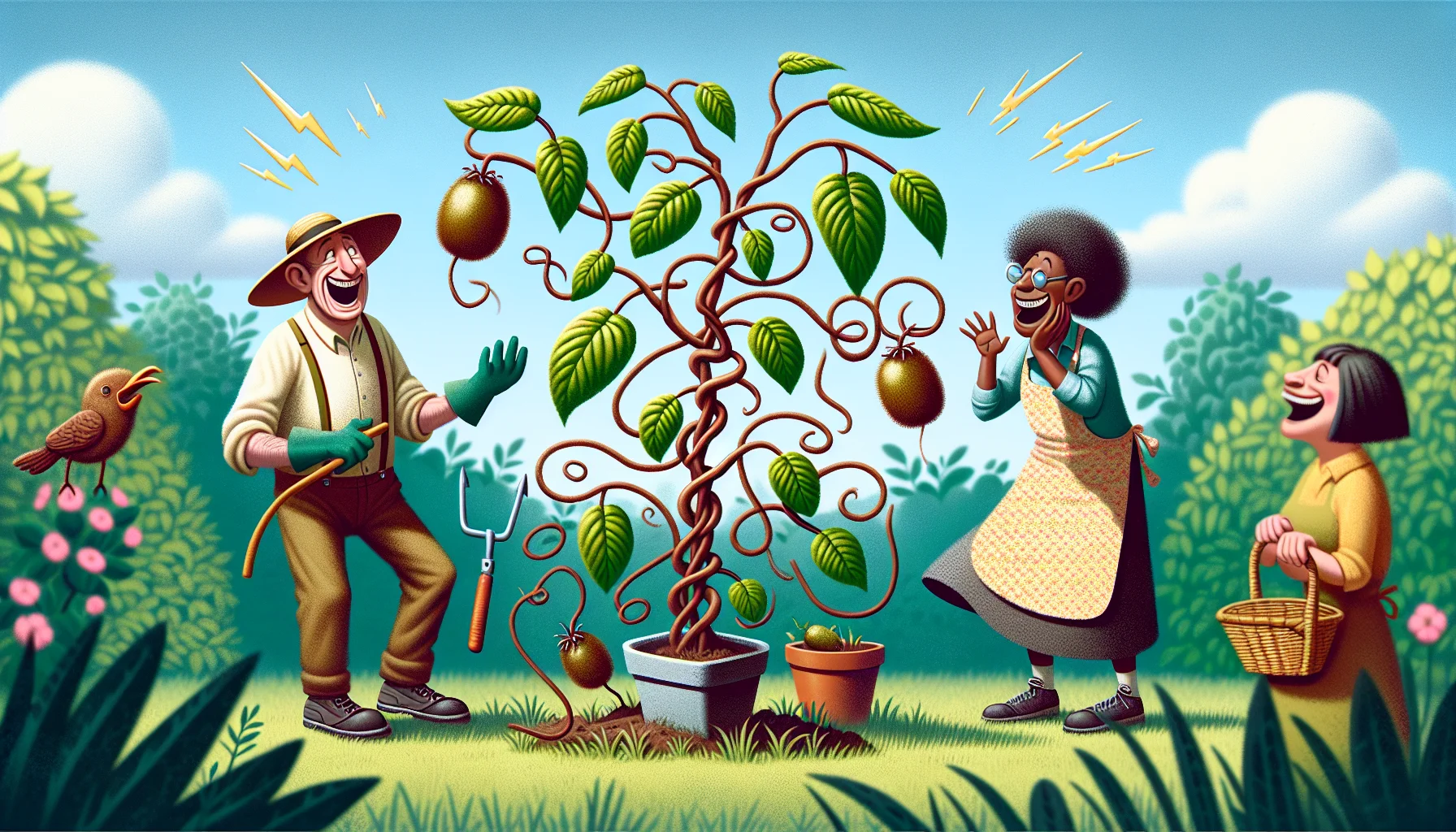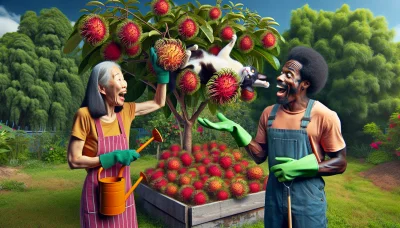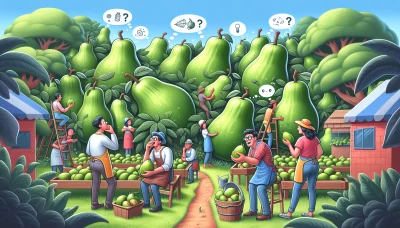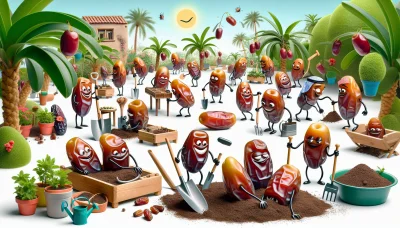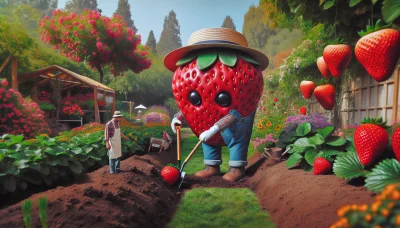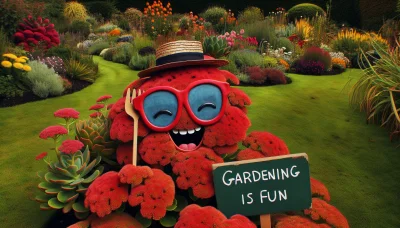Actinidia chinensis Quiz
Test Your Knowledge
Question of
Introduction to Actinidia Chinensis
Actinidia chinensis, commonly known as the kiwifruit or Chinese gooseberry, is a fruit-bearing vine native to China. This species is characterized by its brown, fuzzy skin and bright green or golden flesh with tiny, edible black seeds. The fruit is known for its unique sweet and tangy flavor, as well as its high vitamin C content and nutritional benefits. Actinidia chinensis thrives in temperate climates and has become a popular crop in several countries around the world, contributing significantly to the global fruit market.
Growing Actinidia Chinensis
Actinidia chinensis, commonly known as the kiwifruit or Chinese gooseberry, thrives in well-drained, acidic soils with a pH between 5.0 and 6.5. This plant prefers a climate that has both sunny summers and cool winters, making it ideal for regions that experience distinct seasons. It requires full sun to partial shade, with protection from the intense afternoon sun in hotter climates. Adequate watering is crucial, especially during the growing and fruiting seasons, to maintain moist but not waterlogged soil conditions. With the right care, Actinidia chinensis can produce delicious fruits and add a lush, green look to your garden.
Planting Actinidia Chinensis
- Choose a sunny location with well-drained soil.
- Ensure the soil pH is between 5.0 and 6.5 for optimal growth.
- Prepare the planting area by loosening the soil to a depth of 12-15 inches and mix in compost or aged manure.
- Plant Actinidia chinensis in early spring or fall to avoid extreme temperatures.
- Space plants 10-15 feet apart to allow room for growth and air circulation.
- Dig a hole twice as wide and the same depth as the root ball.
- Remove the plant from its container and gently loosen the roots.
- Place the plant in the hole, ensuring it's at the same depth it was in the container.
- Backfill the hole with soil and press firmly around the base of the plant.
- Water thoroughly after planting to settle the soil around the roots.
- Mulch around the base of the plant to retain moisture and suppress weeds.
- Water regularly, especially during dry periods, to establish a strong root system.
Caring for Your Actinidia Chinensis
Actinidia chinensis, also known as Kiwifruit, requires specific care to thrive and produce fruit. Below are the essential care requirements to keep your plant healthy and productive.
- Watering: Water your Actinidia chinensis regularly, keeping the soil moist but not waterlogged. During the growing season, increase the frequency of watering, especially in dry conditions.
- Fertilizing: Apply a balanced fertilizer in early spring before new growth appears. A mid-season application of a high-potassium fertilizer can help boost fruit production.
- Pruning: Prune in winter when the plant is dormant. Remove any dead or diseased wood and thin out crowded areas to improve air circulation. Prune back to healthy buds to encourage branching.
Common Pests and Diseases
Actinidia chinensis, commonly known as the Kiwifruit, is susceptible to a range of pests and diseases that can significantly impact its growth and fruit production. Among the common pests are the Kiwifruit Vine Caterpillar and the Passionvine Hopper, which feed on the leaves and can cause severe damage if not controlled. Diseases like Botrytis cinerea, a fungal infection that leads to gray mold, and Pseudomonas syringae, which causes bacterial canker, are also prevalent. To prevent these issues, it's crucial to maintain good air circulation through pruning, apply appropriate fungicides or bactericides as needed, and manage insect populations through natural predators or insecticides. Regular monitoring of the plants for early signs of infestation or disease is key to maintaining healthy and productive kiwifruit vines.
Harvesting and Using Actinidia Chinensis
Actinidia chinensis, commonly known as the kiwifruit or Chinese gooseberry, is a fruit that requires careful attention to timing and technique for harvesting. The best time to harvest these fruits is in late autumn, just before the first frost, when they are plump and have turned a brownish color. The fruit should be cut from the vine with a sharp pair of scissors or pruning shears to avoid damaging the plant. Although the fruits may still be hard, they will ripen after a few days to a week if kept at room temperature. Once softened, they should be refrigerated or consumed.
- Eating fresh: The most common way to enjoy kiwifruit is simply by cutting it in half and scooping out the flesh with a spoon.
- Salads: Kiwifruit can add a sweet and tangy flavor to any salad. It pairs well with greens, nuts, and other fruits.
- Smoothies: For a nutritious boost, add kiwifruit to your morning smoothie. It blends well with other fruits and vegetables.
- Baking: Kiwifruit can be used in baking, adding a unique flavor to cakes, muffins, and tarts.
- Jams and preserves: With its high pectin content, kiwifruit is excellent for making jams, jellies, and preserves.
FAQs on Actinidia Chinensis
| Question | Answer |
|---|---|
| How long does it take for Actinidia chinensis to bear fruit? | Actinidia chinensis typically takes 3 to 5 years to bear fruit after planting. |
| Can Actinidia chinensis grow in pots? | Yes, Actinidia chinensis can be grown in pots, but they require large pots and regular pruning to manage their size and support healthy growth. |
| What are the soil requirements for Actinidia chinensis? | Actinidia chinensis prefers well-drained, fertile soil with a pH between 5.5 and 7.0. |
| How much sunlight does Actinidia chinensis need? | Actinidia chinensis requires full sun to partial shade for optimal growth and fruit production. |
| Is Actinidia chinensis self-pollinating? | No, Actinidia chinensis is not self-pollinating. It requires a male plant to pollinate the female plants for fruit production. |
| How often should Actinidia chinensis be watered? | Actinidia chinensis should be watered regularly, keeping the soil consistently moist but not waterlogged, especially during dry periods. |
| What pests and diseases affect Actinidia chinensis? | Actinidia chinensis can be affected by pests such as aphids and diseases like root rot and bacterial canker. |
| When is the best time to plant Actinidia chinensis? | The best time to plant Actinidia chinensis is in the early spring or fall, when the weather is cooler. |
| When should Actinidia chinensis be pruned? | Actinidia chinensis should be pruned in the winter when the plant is dormant, to shape the plant and remove any dead or diseased wood. |
| Can Actinidia chinensis withstand frost? | Actinidia chinensis is moderately frost-tolerant, but young plants and new growth can be damaged by late frosts. |
